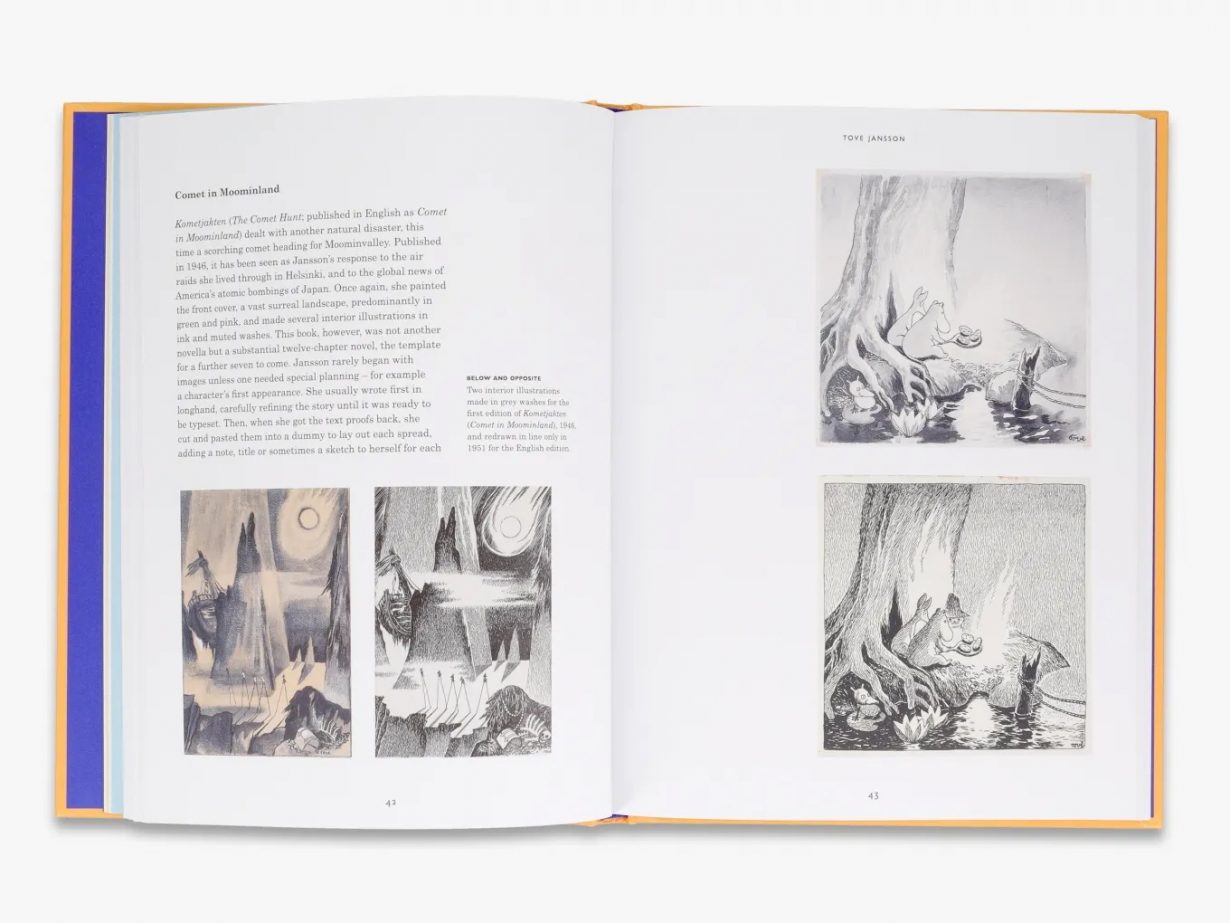A new survey of the Finnish artist’s work revives the urge to revisit the world of the Moomins

At age seven, inspired by a sculptor father and a graphic-designer mother, and moved by the urge to get her work out there, Tove Jansson set up the ‘Tove Publishing Co’ to sell her illustrated stories to classmates in Helsinki. This anecdote, recounted in Paul Gravett’s informative – if rather bland – survey of the Moomins creator’s work, sets the tone for the rest of her extraordinarily prolific career: as an illustrator and author behind the globally famous family of cute hippolike creatures, but also as a painter, graphic designer, costume and set designer for the theatre, and author of short stories and novels.
Focusing on Jansson’s graphic universe, the book is filled with images of her work from early on: the cartoons and illustrated children’s stories she got published during her teenage years; paintings produced while attending art school (her dreams of becoming a painter were set aside after a critic dismissed her work as ‘illustrative’); the daring political covers she started creating for the satirical Finnish magazine Garm. But much of the book revolves around the Moomins, Jansson’s life project, from their genesis as a 1930s graffiti on the wall of the family house to a fully fledged world, that outlives Jansson (she died in 2001) in both its original print forms (seven illustrated novels, later reworked into picture books and comic strips for the UK’s Daily Mail) and its many adaptations (to the screen, theatre and opera, into 3d models, bespoke museums and infinite paraphernalia).

Throughout, Gravett picks up on some of the revolutionary aspects of Jansson’s storytelling (challenging gender clichés, for instance), creating parallels with her own nonnormative lifestyle (Jansson lived with women most of her life, referring to her homosexuality in code as the ‘spook side’). What feels missing from this account however is a bit of critical engagement with Jansson’s work: what exactly makes the little Finnish creatures so appealing, their illustrations poetic or unique, is for the reader to know or figure out. Perhaps what this book does best is revive the urge to (re)turn to the books and, as Jansson herself admitted while writing the first Moomins book during wartime, creep back ‘into an unbelievable world where everything was natural and benign’. After all, fantasy is never as appealing as in times of crisis.
Tove Jansson by Paul Gravett, Thames & Hudson, £19.99 (hardcover)